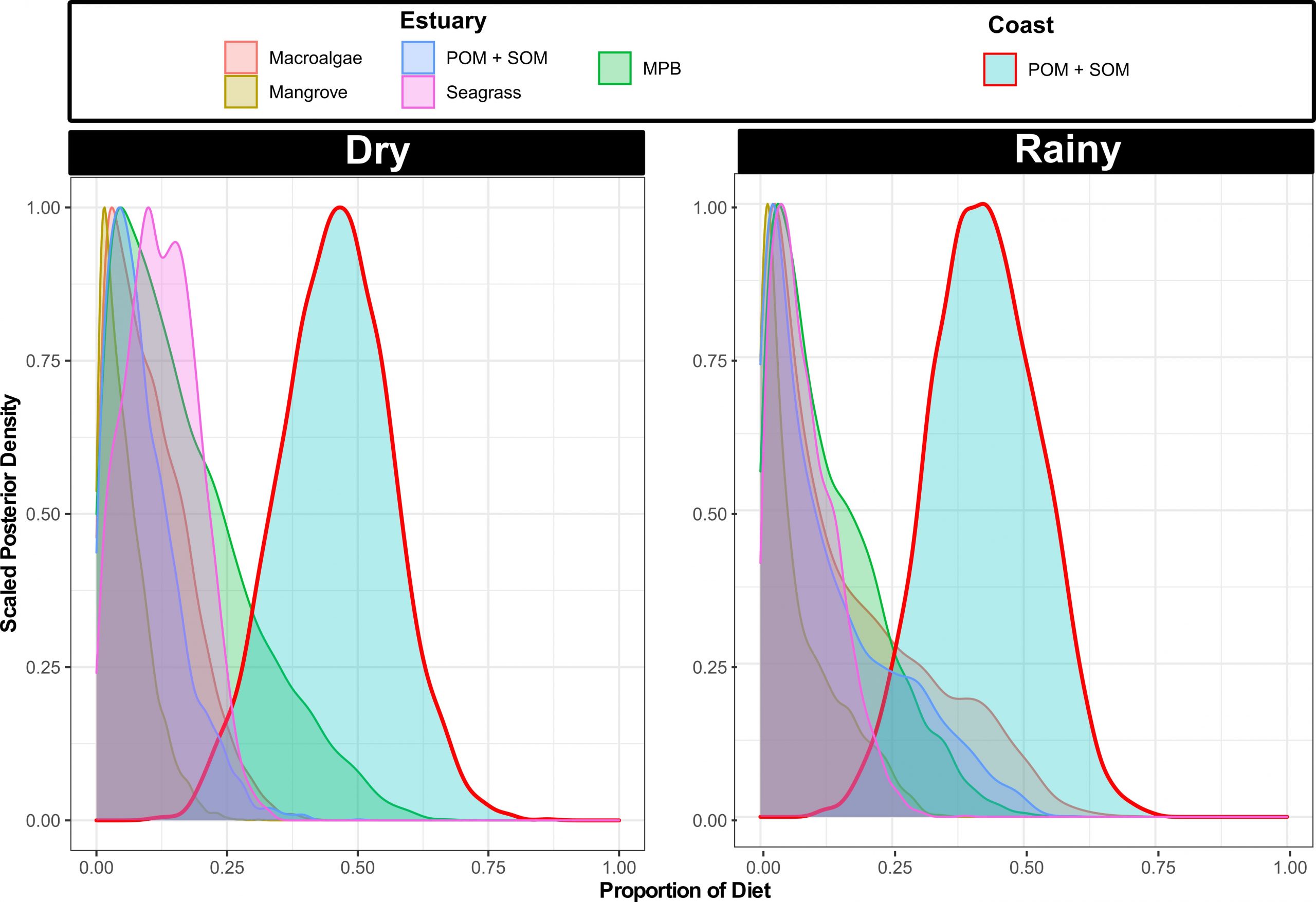
The lack of knowledge about highly anthropised tropical ecosystems poses a problem for their conservation. Using carbon and nitrogen stable isotopes, we studied the food web structure of the estuarine ecotone of the Santa Cruz Channel (SCC), which constitutes a critical habitat for many socio-economically important species in northeast Brazil. Therefore, we assessed the spatial (estuary/coast) and seasonal (dry/rainy) isotopic variation of basal food sources, invertebrates and fishes. We also used Bayesian mixing models to trace the origin (estuary vs coast) of the organic matter sources supporting SCC fishes food webs according to their feeding habits. We found a wide range of δ13C and δ15N values for basal sources, invertebrates, and fish in coastal and estuarine environments, but isotopic compositions showed greater variability in the estuary. This illustrated the heterogeneity of primary producers and sources in estuaries, intensified by SCC morphology, as both accesses to the sea provide strong mixing between riverine and marine inputs. Additionally, we found differences between fish isotope compositions according to their guilds. Coastal basal sources significantly support zoobenthivorous, piscivorous and zooplanktivorous fish estuarine food webs. Conversely, detritivores are supported by enriched sources of organic matter, especially during the dry season, which may be derived from terrestrial inputs. As contaminated land-based inputs can affect food webs and coastal fisheries, developing a management plan that includes all interconnected habitats is necessary.
Reference
Latifa Pelage, Valdimere Ferreira, Flávia Lucena-Frédou, Guilherme V.B. Ferreira, Júlio Guazzelli Gonzalez, Andréa Pontes Viana, Alex Souza Lira, Jean-Marie Munaron, Thierry Frédou, Frédéric Ménard, François Le Loc’h








